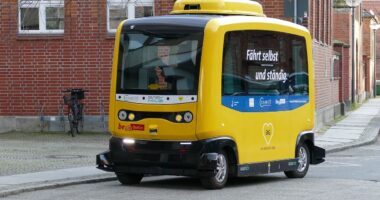Artificial Intelligence (AI) is making significant strides in various fields, and education is no exception. AI is reshaping how teaching and learning occur, offering innovative solutions to traditional educational challenges. This article explores how AI is transforming education, from personalized learning experiences to advanced teaching tools, and its implications for the future of education.
1. Personalized Learning with AI
One of the most promising applications of AI in education is personalized learning. AI-driven platforms analyze individual student data to tailor educational content and experiences to each learner’s needs. Key aspects include:
- Adaptive Learning Systems: AI-powered adaptive learning platforms adjust the difficulty of tasks and content based on a student’s performance. These systems identify strengths and weaknesses, offering targeted exercises to address learning gaps.
- Personalized Recommendations: AI algorithms suggest additional resources, such as videos or articles, based on students’ interests and learning styles. This helps students engage more deeply with the material and fosters a more personalized learning experience.
- Real-Time Feedback: AI provides immediate feedback on assignments and quizzes, helping students understand mistakes and learn from them promptly. This instant feedback loop accelerates learning and improves academic performance.
2. Intelligent Tutoring Systems
Intelligent Tutoring Systems (ITS) are AI-powered tools designed to provide personalized instruction and support. They simulate one-on-one tutoring experiences and offer several benefits:
- 24/7 Availability: ITS can provide round-the-clock assistance, allowing students to seek help anytime. This flexibility is especially useful for remote learners and those with varying schedules.
- Customized Learning Paths: ITS create individualized learning paths based on students’ progress and needs. They adjust content and recommendations in real-time to ensure students stay on track and achieve their learning goals.
- Interactive Learning: These systems often include interactive elements, such as quizzes and simulations, which engage students and enhance their understanding of complex concepts.
3. AI-Enhanced Educational Content
AI is also transforming the creation and delivery of educational content. Key innovations include:
- Content Generation: AI can generate educational content, such as practice questions and summaries, based on the curriculum. This helps educators save time and focus on more critical aspects of teaching.
- Language Translation: AI-powered translation tools facilitate access to educational materials in multiple languages, making learning more inclusive and accessible for non-native speakers.
- Interactive Simulations: AI creates interactive simulations and virtual environments that allow students to explore subjects in a hands-on manner. For example, science students can conduct virtual experiments, and history students can experience historical events through immersive simulations.
4. AI in Administrative Tasks
AI is streamlining administrative tasks in education, improving efficiency, and reducing the administrative burden on educators. Key applications include:
- Automated Grading: AI systems can grade assignments and exams, providing quick and consistent evaluations. This allows teachers to spend more time on instruction and less on administrative tasks.
- Student Attendance: AI-powered systems can automate attendance tracking through facial recognition or biometric systems, reducing manual record-keeping and ensuring accuracy.
- Data Analysis: AI tools analyze student performance data to identify trends and insights. This information helps educators make informed decisions about instructional strategies and interventions.
5. Challenges and Considerations
While AI offers numerous benefits, it also presents challenges and considerations:
- Data Privacy: Protecting student data is crucial. Schools must ensure that AI systems comply with privacy regulations and safeguard sensitive information.
- Equity and Access: Ensuring that all students have access to AI-powered tools and resources is essential to avoid widening the educational divide.
- Teacher Training: Educators need adequate training to effectively integrate AI tools into their teaching practices and make the most of the technology.
6. The Future of AI in Education
The future of AI in education holds exciting possibilities:
- Enhanced Personalization: AI will continue to refine personalized learning experiences, offering even more tailored educational content and support.
- Collaborative Tools: AI will facilitate collaborative learning through tools that support group projects and peer-to-peer interactions.
- Lifelong Learning: AI will support lifelong learning by providing continuous education opportunities and adapting to evolving skill requirements in the workforce.
Conclusion
AI is revolutionizing education by transforming teaching methods, enhancing learning experiences, and streamlining administrative tasks. From personalized learning and intelligent tutoring systems to AI-enhanced content and administrative efficiency, AI is reshaping the educational landscape. As technology advances, addressing challenges related to data privacy, equity, and teacher training will be crucial for maximizing the benefits of AI in education. The future promises a more personalized and efficient learning environment, benefiting students and educators alike.





